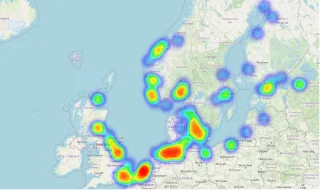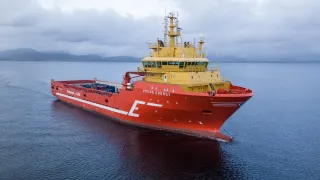VTT is delighted to be a partner in the Apollo project, in which Shipowner Eidesvik Offshore and partners will make “Viking Energy” the world’s first ammonia-powered platform supply vessel. In 2026, the vessel will operate on ammonia for Equinor, reducing GHG emissions by 70 percent or more.
With €5 million in EU funding, the Apollo project will demonstrate a dual-fuel engine able to operate on ammonia. The project placed a purchase order in July for the Wärtsilä 25 engine and complete fuel gas supply system, which will be installed onboard the platform supply vessel Viking Energy.
Viking Energy is owned and operated by the Norwegian shipowner Eidesvik Offshore, who will demonstrate the technology in an operational environment on contract for Equinor, an international energy company. Viking Energy is also a demonstrator vessel in the EU-funded ShipFC project, which aims to pilot ammonia-powered fuel cells.
VTT is responsible for leading the study on adapting the technology for different vessel types. VTT acquired, processed and analysed the AIS data for Baltic and North seas to better understand the operational patterns of the selected ships. The results will be used as input for the power and consumption models, which will support defining the power demand for different ship types and sizes in the Baltic and North Sea regions. This approach allows us to estimate fuel consumption and the required onboard space for different types of fuels, as well as their impact on general arrangement, cargo capacity, and ship autonomy.

The partners will prepare different modular designs and concepts, allowing the quick adoption of ammonia engines as an alternative for existing and new ships. The concept will include safety and monitoring systems and fuel gas supply systems. Ship design services will be delivered by Breeze Ship Design, and the complete ammonia solution from the engine, fuel gas supply system and service agreement are provided by Wärtsilä.
Market changer in time for 2030
Emissions from waterborne shipping are a major challenge, and the European industry is on a mission to reduce its greenhouse gas emissions by 50 percent by 2030. The Apollo concept can play a vital role in demonstrating the necessary solutions, as the technology will suit a large portion of the European fleet.
The design will be adapted to allow shipowners, ship designers, shipyards, classification agencies, and insurance companies to adopt the Apollo solution into their decision-making processes as early as 2027.
The partners will also map the existing supply chain of green ammonia in Europe and study the needed bunkering infrastructure to serve seagoing and inland vessels.
The Apollo project, which has received funding through the EU's Horizon Europe programme, is run by a consortium of eight European companies and institutions. The project is coordinated by Maritime CleanTech (Norway) and the project partners include Eidesvik Offshore ASA (Norway), Equinor (Norway), Wärtsilä (Finland), Breeze Ship Design (Norway), VTT, Deme Group NV (Belgium) and National Centre of Scientific Research "Demokritos" (Greece).
The project is funded by the Horizon Europe framework programme, aiming to accelerate the transition towards a climate-neutral Europe by 2050 by funding projects that contribute to research and innovative solutions in various sectors related to climate, energy, and mobility.
*Photo credits of the main photo: Peter Tubaas/Vestland Media



